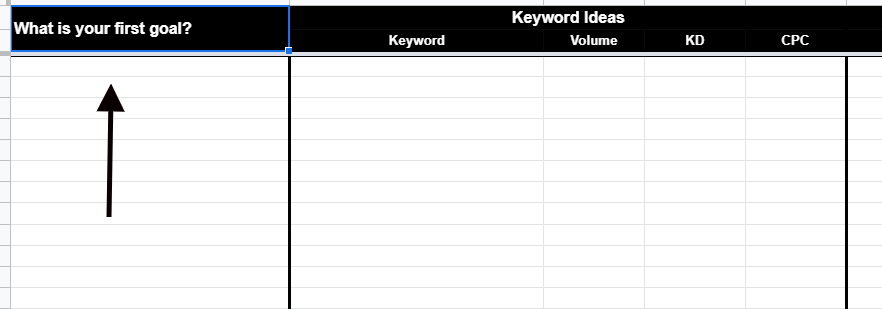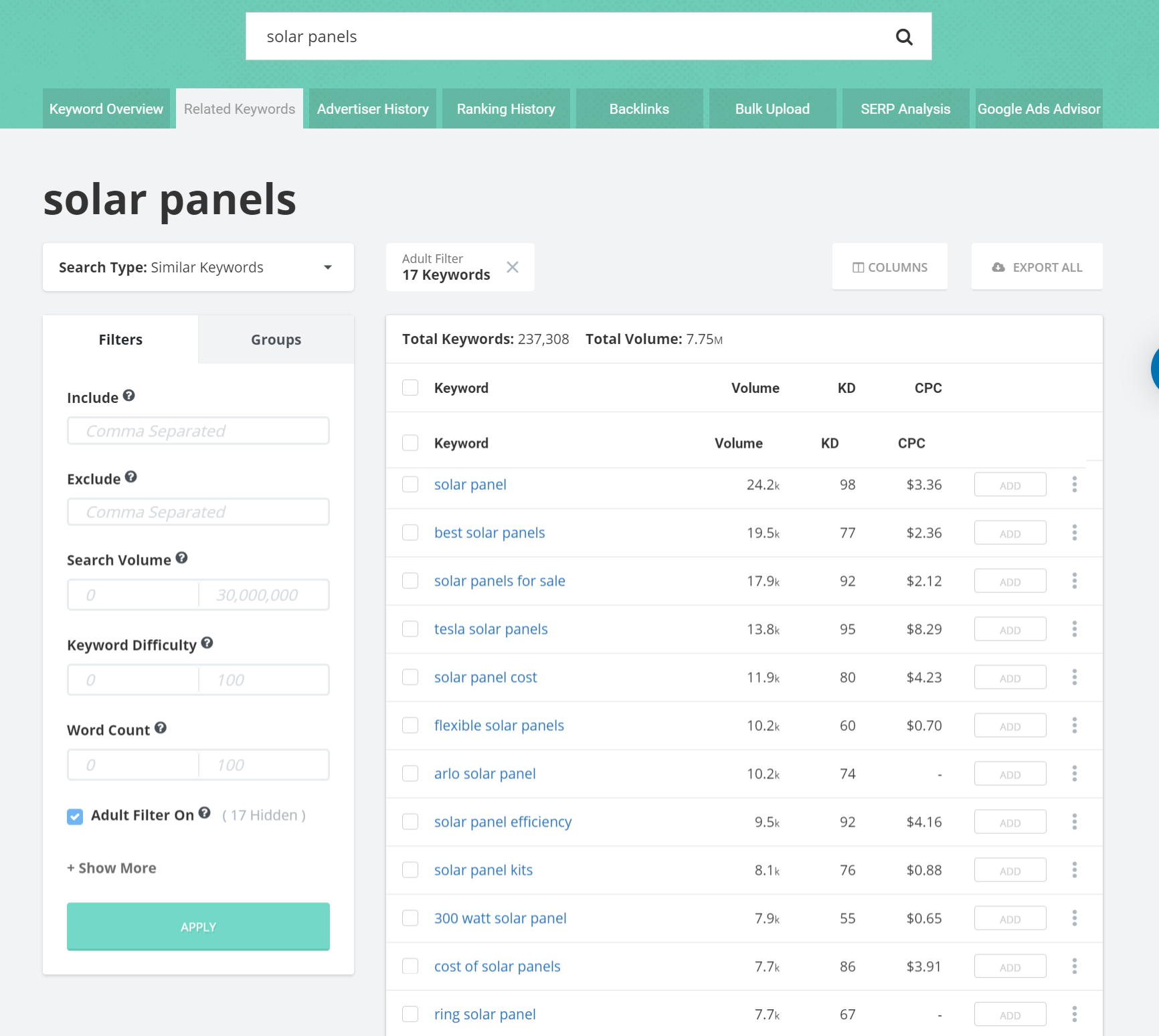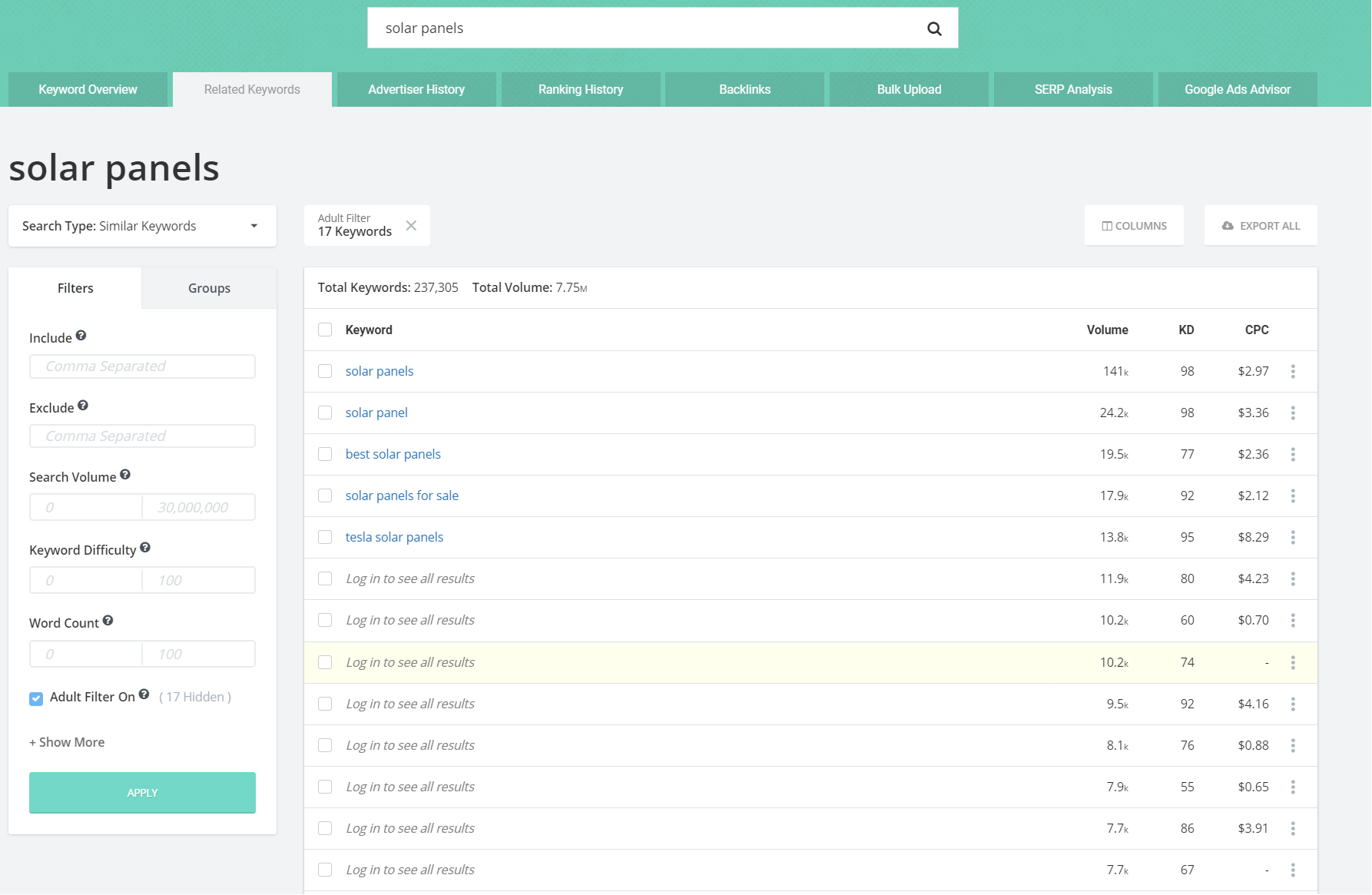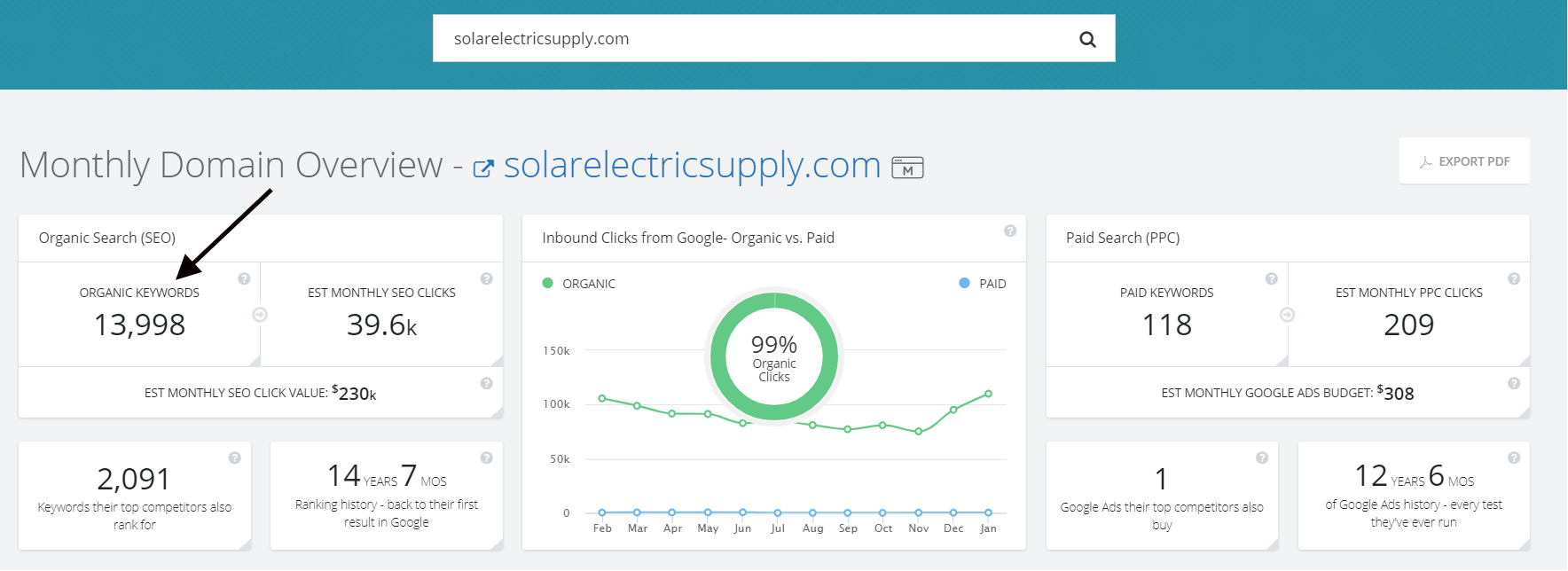Sun Tzu once said, “In the middle of chaos lies opportunity.” And in SEO, there is no bigger opportunity than the chaos of the SERP rankings.
Competitive analysis is how we find these opportunities, plan our content strategy, and capitalize on our competition’s weaknesses. Competitive analysis is not easy. It takes time, patience, and practice—three elements that can be luxuries for many busy marketers .
To help you make sense of it all, we’re sharing insights from Mike Roberts, founder of SpyFu, on how to take your competitive analysis to the next level.
We are also including an SEO competitive analysis template, which you can use to organize what you learn, find content ranking opportunities, and make concrete ranking strategies and goals.
By conducting your competitive analysis this way, you can start to lay down SEO strategies for overcoming the competitive landscape and maximizing your website’s potential.
Step 1: Set Up Your Research Tools and SEO Competitive Analysis Template
To do proper SEO competitive analysis research, you need to have some basic tools and materials.
First, you need somewhere to record your data. You can do that on our purpose-built SEO competitive analysis template or on whichever program makes it easy for you. Consider:
- Google Sheets: Free, easy to use, and easy to collaborate with others on
- Excel: A good alternative to Sheets for people more familiar with the Office ecosystem
- Pen and paper: Sometimes old-school is the best way to go
You will also need access to SEO data on keyword volumes, difficulties, PPC figures, and more. We will be using SpyFu throughout this article to find this information, but other keyword research tools can work, too. If you’re looking for a budget-friendly option, we recommend:
- The free version of SpyFu (full suite of SEO research tools)
- Answer the Public (for keyword marketing research)
- Google’s Keyword Planner (for keyword research with general difficulty and volume statistics)
Once you have the tools to record and research your data, we can get started on our competitive analysis research.
Step 2: Set Your Goals
Next, you want to set some goals. It may be counterintuitive, but before you can analyze your competitors’ positions, you need to do some basic groundwork so you can make the most out of what you learn later on. Concrete goals for your SEO content will help you sort through keywords and find the best ones to get you the results you want. Ideally, your business goals and search intent for the keywords you choose should match perfectly.
If you are using our template, you can start by writing down your goal or goals in the far-left column of the Keyword Ideas tab.

An example of a goal could be:
- Increase sales of X product.
- Grow authority in Y niche.
- Boost signups for Z service.
Now that you have a goal, you can start brainstorming keywords that will help you turn that goal into reality.
Step 3: Find Your Keywords
Keywords are the foundation of every SEO strategy. Determine which keywords are best suited to your content goals, and identify topic clusters to help build your topical authority.
On our template, we have broken up our keywords into three categories:
- Keyword ideas (new keywords that you believe will help)
- Competitor keywords (keywords you want to steal from your competitors)
- Current keywords (keywords you already rank for)

New Keyword Ideas
Don’t worry about data when brainstorming new keywords. Just list the keywords that you believe your users will search for. Here are some of the best ways to find new keywords:
- Conduct search intent analysis, a process that helps you understand what searchers want when they search a keyword. This can help you come up with targeted keywords that match your searchers’ needs.
- Take some of your keywords, and plug them into SpyFu’s Related Keywords tool. In our example, we have used the short-tail keyword “solar panels” to generate a list of potential keyword ideas.

If you are working on the free version of SpyFu, this page will look a little different. No worries, you will just need to be a little more creative with your searches because SpyFu’s free version restricts results to only the top five results.

The search engine results page often includes more keyword ideas. You will notice the “People also ask” and “Searches related to” sections.
A shortcut for these sections is included in the same SpyFu "Related Keywords" section above. It allows you to switch from "similar keywords" to "questions people ask" for expanded content opportunities.
One more place we like to look is Answer the Public. Type in your short-tail keyword, and Answer the Public will give you an infographic of commonly searched-for questions and queries. You can copy and paste this list of keyword ideas directly into our template by downloading the CSV in the top-right corner.

Competitor Keywords and Keywords You Already Rank For
Next up, you are going to look for keywords that you and your competitors already rank for. For your own keywords, you can focus on boosting their rankings so you get more of the overall search traffic. For competitor keywords, this can help you find and steal keywords that your competitors are profiting off of. If you aren’t sure of your competitors, you can come back to this step after you finish Step 5.
To find your and your competitor’s keywords, use SpyFu’s Domain Overview tool. Type in a domain and click on the Organic Keywords section; you will be taken to a list of all the keywords that the site ranks for.

Once you get to the competitor’s list of organic keywords, you can explore and find keywords you may want to rank for. We recommend starting by filtering by specific web pages and searching by topics to find the keywords most relevant to you. After that, you can sort by “SEO Clicks” to target your competitor’s most effective keywords.

Repeat this process with your website and all of your competitors to fill out the rest of this section of our template
Find the Data for Your Keywords
Once you have all of your keywords in one place, you will want to collect some metrics on them to assess their value.
- Volume: the approximate amount of organic traffic a keyword gets per month
- Difficulty: a score representing how hard it will be to rank organically for this keyword
- Cost per Click: the CPC tells us approximately how much you will pay for every click on an ad for this keyword
Depending on how many keywords you have collected, this process could take some time. As you work, think about how these keywords can be grouped into clusters, as this will save you time in the next section.
Step 4: Arrange Your Topic Clusters
Topic clusters are a web of related themes and ideas. They are among the ways that search engines use to determine how authoritative you are on a subject because they can see that you are posting not only about this keyword but also on multiple other keywords that are related to it as well.
Making a topic cluster with short-tail keywords in the center, with spokes of long-tail keywords around them, can help you visualize the topic you want to rank for, allowing you to see potential opportunities and plan the types of content you may want to create.
Choose your keywords based on three important metrics:
- Traffic volume
- Difficulty score
- Relevancy to your content
Based on these factors, rank your keywords (or at least highlight your most promising ones), and then begin putting them into a cluster. You can use the free online tool MindMup, as we have in the example below. The result should look something like this:

At this point, you can probably already see some content ideas. Each of these bubbles could become its own piece of content, or you could combine similar ones into a larger post. For example, “Best Solar Panels” could become a larger post incorporating each of the smaller bubbles that link to it.
These clusters should let you see how your keywords and ideas could form a future cluster of content that feeds into a central pillar. In this case, the pillar content would target the keyword “buy solar panels” and link to the related content. All together, the posts boost our topical authority and raise our chances of ranking for “buy solar panels.” You can learn more about this concept on this post about pillar pages.
Step 5: Take Stock of Your Competitors
Once you have decided on a cluster of keywords, it’s time to start doing your SEO competitor analysis research to see who you will be trying to outrank.
Find your Competitors
The easiest way to find your competitors is to check SpyFu’s SERP Analysis, where you can see exactly who you will be up against in the search results.

It’s important to note that not everyone on this list will be your true competitors. As Mike Roberts notes:
“Google optimizes the SERP to have a diverse set of results for any given search ... [so] if [your competitor’s] profit model means that whenever they make money you lose an opportunity to make that same money—well, you’re unlikely to be able to partner and they’re your direct competitor. If, on the other hand, you can both make money at the same time—you’re potential partners.”
With this tool, you can put together a complete list of your competitors for each keyword you want to rank for. Under our Competitive Analysis Template’s Rankings Analysis tab, you can fill in that information so that you can clearly see who you need to beat to rank for each keyword.

Understand Why Your Competitors Rank
Now that you know who you are competing with, you need to determine how hard it will be to beat them. This means understanding why they rank at the top of Google for this search term.
Websites rank well on Google for a number of reasons. To make it simple, we have boiled it down to four broad metrics:
- Domain Strength (also called domain authority): This calculates how much of an authority this domain is as a whole. Use this tool from Moz to gauge domain strength. You should get a number from 1 to 100, with 1 being a low-ranking website and 100 being the most authoritative websites. You will want to compare this with your own site, so make sure to put your own website into this tool as well.
- Content Strength (this particular piece of content is strong enough to rank): For gauging the strength of your competitor’s content, you will have to use your own expertise to decide on how good you believe their content is on a scale from 1 to 10.
Here are some things to look for:
- Are there factual errors in the content?
- Is the information outdated?
- Are they doing anything extra for their readers?
- Does the page have strong on-page SEO features?
If you feel their information is out of date, incorrect, or just lacking in detail, you could score it low (1-3). On the other hand, if you are getting new data, free resources, and well-written content, it could be at the high end of the scale (7-10). This is a subjective scale, but it should help you later on, when you are determining which keywords to target first.
3. Topical Authority (this domain is considered an expert in the field): Topical authority is the most difficult strength to determine. But Mike Roberts believes that with a bit of detective work, it can be determined:
“So, there are basically two ways [websites with low domain strength] can be [in the SERP]. It’s either the strength of the content itself, or the topical authority of the website. So, by a process of elimination--if their content isn’t great (or doesn’t justify their position in the SERP) you know it has to be their topical authority.”
Use this process-of-elimination tactic to determine whether your competitor’s articles are in the SERP based on their topical authority.
Another way to get a feel for topical authority is the Top Pages tool. Put in your competitor’s domain, and then filter by keyword to find the most relevant top pages on that subject.

Note how many pages rank for this keyword and how many of these pages actually get SEO clicks. If only one page is getting any organic traffic, they probably don’t have much topical authority (1-3). If they have over 20 pages on this topic cluster, each contributing significant organic traffic, then they would be high on the scale (7-10). The exact numbers are hard to nail down and will depend on the subject itself.
- Backlink Profile (the number and quality of backlinks this page has): A backlink profile is a list of all the backlinks that a page has. Backlinks are a key ranking factor for Google that helps you build the authority of your web page. You should analyze your competitor’s backlink profile to can see how strong it is and to find link-building opportunities for your own future content.
For each of your competitors, determine if they succeed in these fields. Fill in these details beside each competitor on the Ranking Analysis tab of our SEO competitor analysis template.

Now that you know why your competitors rank, you need to figure out your own position.
Step 6: Understand What You Can Rank For
SEO competitive analysis isn’t all about researching your competitors. You also need to know what you can rank for so you know which keywords are worth prioritizing. By gauging your own strengths, you can make informed decisions about which keywords you want to challenge your competitors for.
Gauge Your Site’s Current Strengths
Before you start trying to rank for a keyword, you need to know the state of your own site. If you don’t have any content on this topic, you can skip to the next section.Start by writing down any content you have on our template’s Rankings Analysis tab. You’ll need to:
- List each page that already ranks for your targeted keywords (even if the target of that page was originally a different keyword)
- Research your domain strength
- Gauge each page’s content strength and topical strength
- List each page’s backlink count
With all of this information written down in one place, you can now decide how best to optimize what you already have.
Maximize your Site’s Strengths
More content is not always better for your site’s overall SEO strength. You want to make sure that all of your content is working for you and not against you. We asked Mike Roberts what he would do to make sure all of your content is helping your SEO, and this is what he had to say:
“The most repeatable way I know to continuously improve existing content is to focus on internal linking. It’s a simple workflow that you can do continuously—and whether your site is big or small, and no matter your market, this process yields consistent ‘better than yesterday’ results.”
But what can you do to improve your internal linking? Here are the steps that Roberts says you can take to accomplish that.
- Get Rid of Pages That Are Hurting Your SEO
“Evaluate each [page that ranks for this keyword]. Is it cannibalizing your existing top content? Is it old or out of date? Is it low quality? If so, remove it. 301 redirect to the top page if it is a relevant destination, and if not, use a 410.”
- Make Super Content (Long Content That Addresses Multiple Topics at Once)
“Does it make sense to merge this content into your top content? Google has developed a taste for ‘super content’—ultra authoritative resources.”
- Add Canonical Tags
“Is it an older but still relevant version on the same topic? Consider a rel=canonical to the top content.”
- Make Sure Everything Is Internally Linked to Your Top Content
“If all else fails, at *least* make sure you are linking to your top content.”
Improving your website’s internal linking may not be the most glamorous task. Still, it can make a large difference in your top page’s rankings and Google’s understanding of your topical authority. Once you have optimized everything you have, it’s time to start making plans for future high-quality content.
Step 7: Follow Through with Your Strategy
With all of your data prepared, it’s time to think about what concrete steps you’ll take to reach your set goals.
Go to the Content Calendar tab on your template, and begin to fill in the table as best you can.

When ranking your content priorities from most to least important, start by sorting keywords based on how feasible it will be to rank for them right now. Ask yourself:
- Will I be able to rank based on my site’s domain strength and topical authority compared to the current top 10?
- If my domain strength and topical authority are weaker than the current top 10, can I make better content than them and rank that way?
- If the answers to 1 and 2 are no, make this a lower content priority so you can build up your strengths with content that’s easier to rank for.
Once you’ve compiled a general list of keywords that you can rank for, start to order them from most important to least. To do this, you should consider:
- What is the expected result of ranking for this keyword (e.g., increase sales, views, topical authority)?
- How does this keyword play into my overall keyword cluster strategy?
- Do I have a credible backlink strategy to help promote this piece?
Finally, consider whether these keywords should be target phrases in a piece of content or act as secondary keywords. You can determine this by:
- Considering whether there is enough to talk about if you only focused on this one keyword
- Examining the Top 10 and seeing what topics they pair together in their own content
Once you have ranked your content and made plans for each of the important keywords in your cluster on the content Calendar tab, don’t forget to set reasonable finishing dates and review dates. These dates help you stay on track and remind you of when you need to go back and see how your content is performing.
With the research done and the plans in place, now all you have to do is execute your plans, so start writing!
What Comes Next?
Your SEO competitive analysis doesn’t end here. Good digital marketers know that content isn’t made in a vacuum, and you should always be watching your competitors and adjusting your efforts accordingly.
With your goals and content priorities starkly laid out before you, you can begin to build momentum and get the most out of your SEO strategies. And by periodically reevaluating your SEO goals and strategy based on your top competitors, you can overcome your competition and continue to build your market share.
It may be chaotic, but the internet is a place of boundless opportunity if you can just find it. Now that you have the tools and the resources to identify these opportunities, you can start to carve out your own place and show the world what you have to offer.

